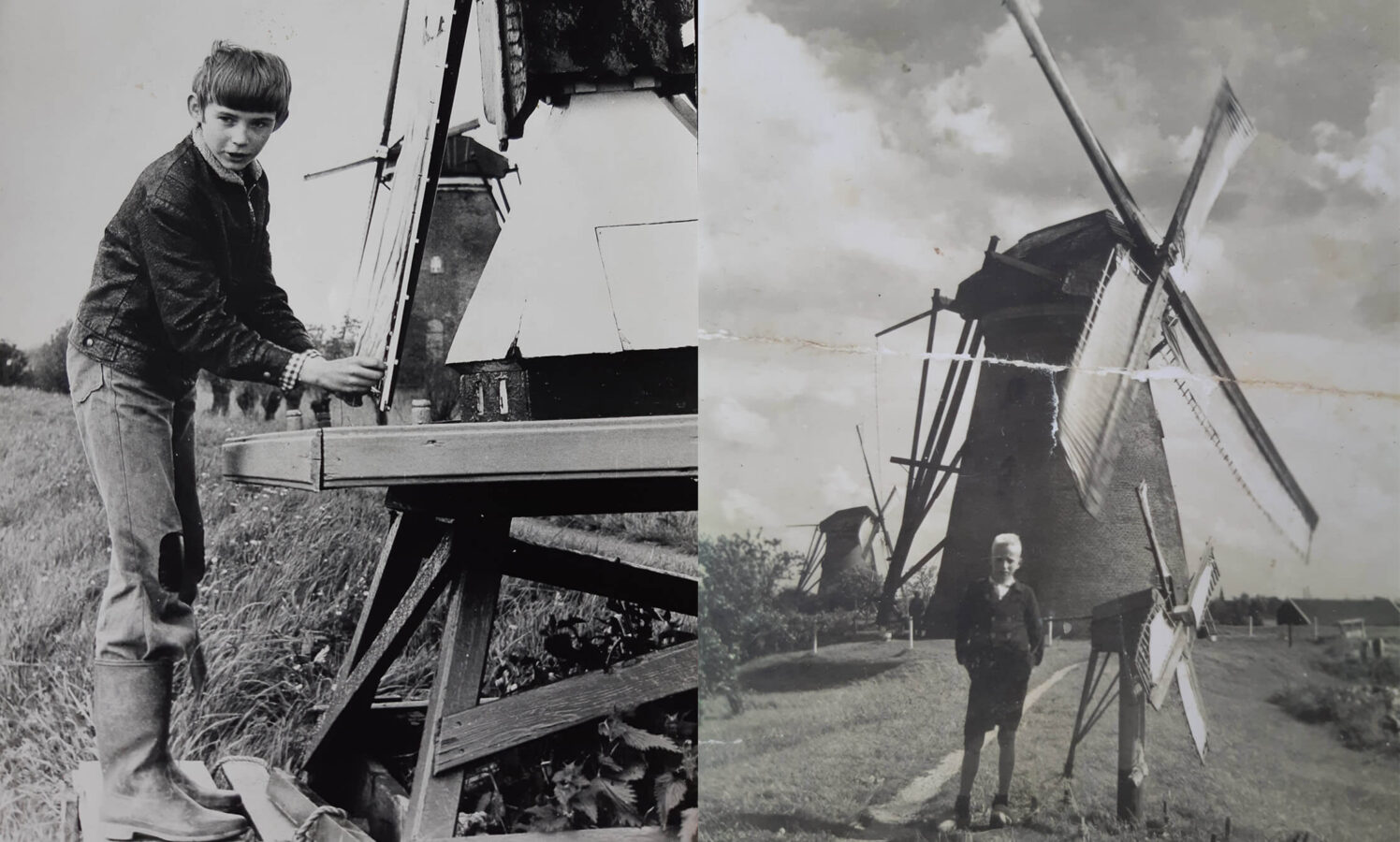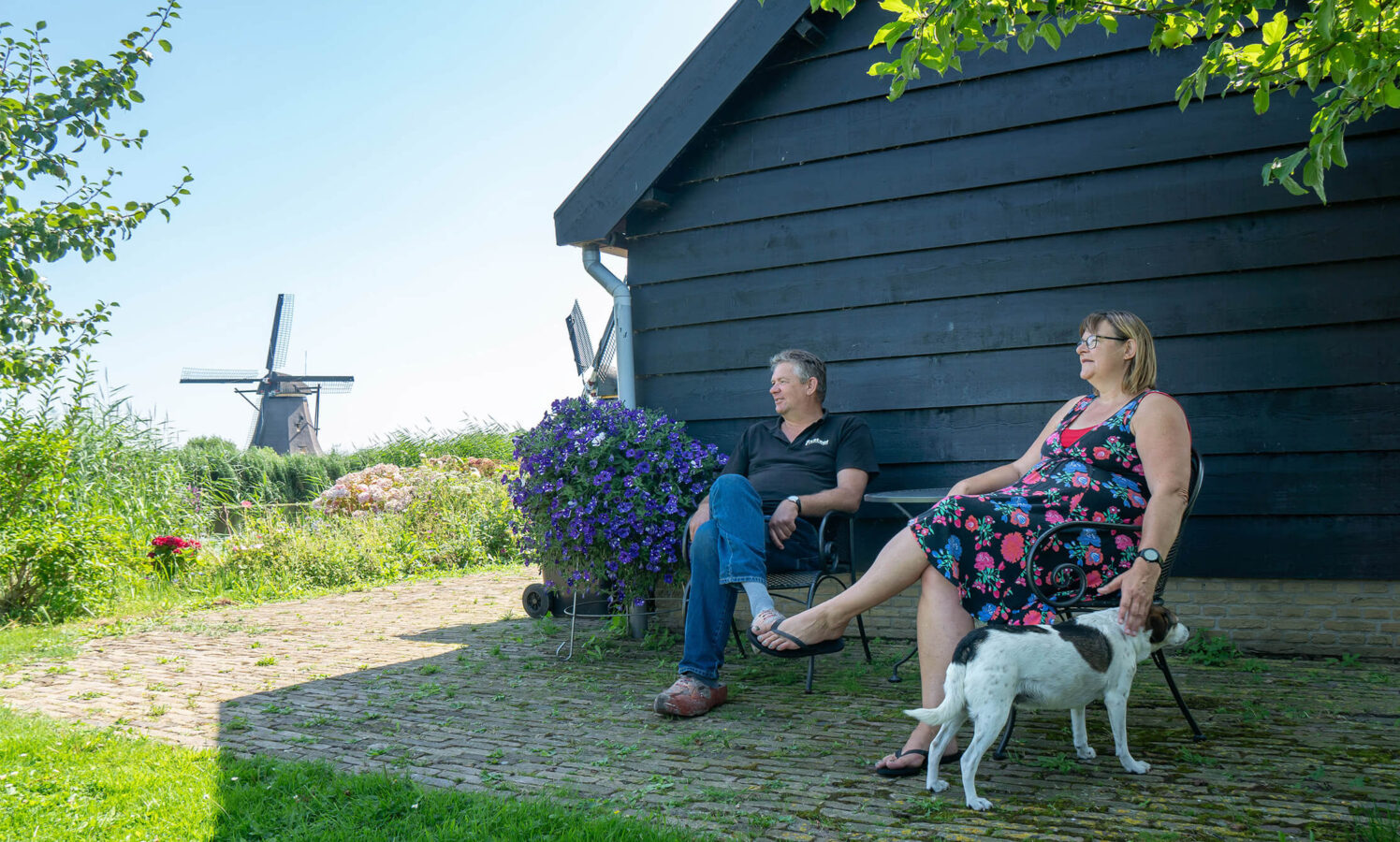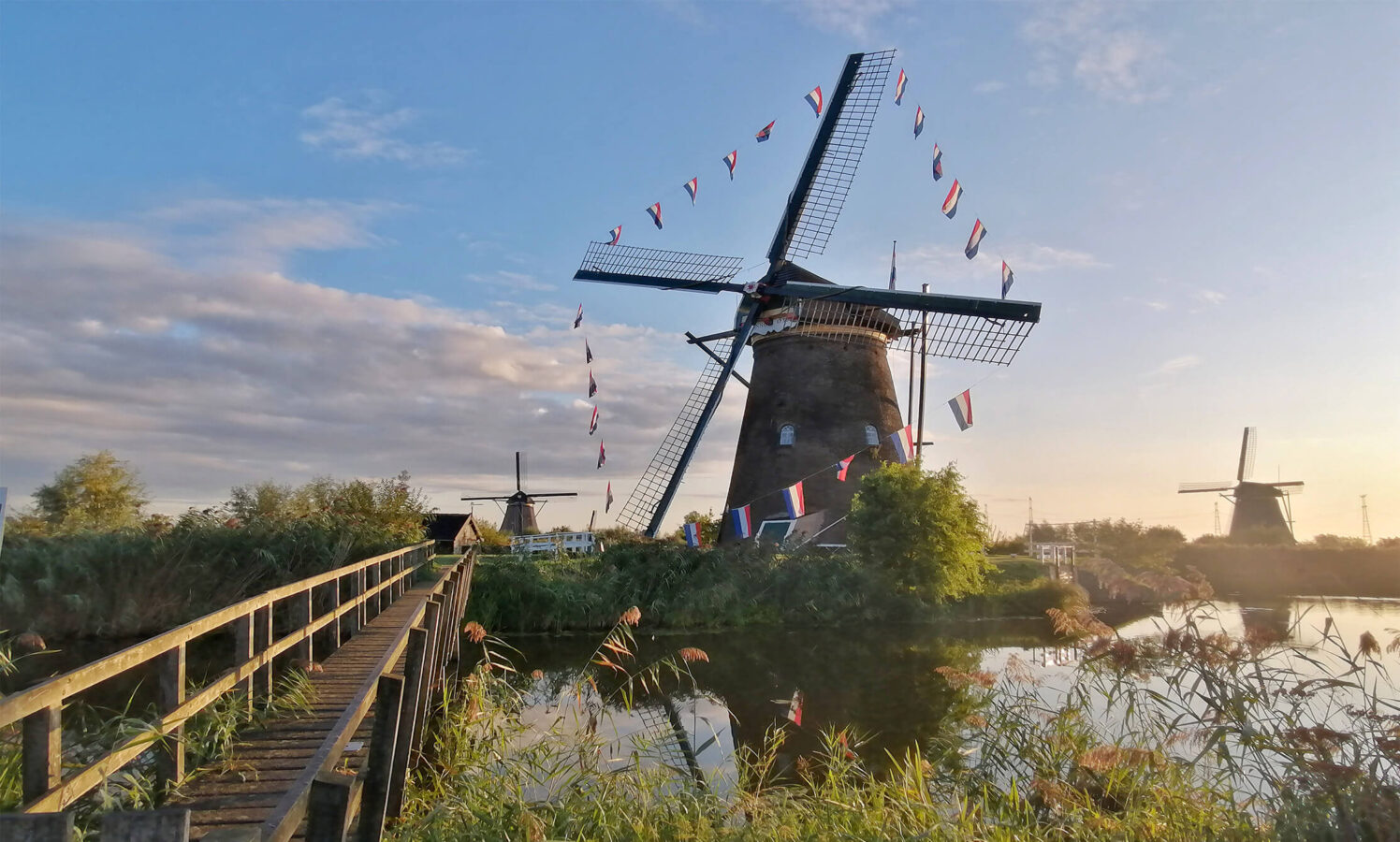
Left: April 30, 1975. Arie aged eleven busy playing with a toy windmill. Right: Summer 1941. Jan Hoek (Arie’s father) aged twelve near Nederwaard mill number 4. In the background, you can see Jan’s father, also called Arie, next to the mill.
STORY
Most of Kinderdijk’s nineteen windmills are inhabited. In fact, having actual occupants is an important factor in the area’s authenticity. The Hoek family have enjoyed a special bond with Kinderdijk for centuries. Along with their two daughters, Arie and Petra Hoek live in Nederwaard’s mill number 5.
Arie represents the tenth generation of this famous Kinderdijk miller dynasty. He shares the position with his next-door neighbour and brother Jan, who lives in Nederwaard’s number 4 windmill. “The oldest written confirmation I managed to find of a Hoek living in a Kinderdijk windmill dates from 1746”, Arie explains. “Jacob Hoek was the first in the middle of the eighteenth century; at his time of death in 1759, he was listed as a miller on the fifth Nederwaard windmill. He was a farmer from the Donck at Brandwijck, not far from Kinderdijk. They were impoverished by a series of floods, and a cattle plague added insult to injury in 1740. That’s how they ended up in the mills here.”

Left: April 30, 1975. Arie aged eleven busy playing with a toy windmill. Right: Summer 1941. Jan Hoek (Arie’s father) aged twelve near Nederwaard mill number 4. In the background, you can see Jan’s father, also called Arie, next to the mill.
Entering the area from the Visitors Centre, you’ll walk or cycle towards two rows of windmills. To your right, you’ll see the Nederwaard mills, and to the left are the Overwaard mills. You can clearly tell the two rows apart. The mills of Nederwaard from 1738 have brick bodies, whereas the Overwaard mills are covered in thatch. Arie and his family occupy the fifth windmill on the Nederwaard side. It was restored in 2011, at a cost of 1.2 million euro. The monumental structure had subsided several dozen centimetres by that time.

Nederwaard windmill number 5 is one of the most photographed mills in the world.
At their heyday in 1941, as many as ten of the (then) twenty Kinderdijk mills were inhabited by members of the Hoek family. Arie: “And on top of that, there were a few a few other lines related to the Hoek family that we don’t count here, even though they traced their ancestry to Jacob too. Well, yes, that’s pretty special. Now, there’s just my brother Jan and myself, and then we’ve hit the bottom of the bucket.” The brothers grew up together in the mill where Jan lives today.
By the middle of last century, the Kinderdijk windmills lost their original function in water management. Pumping stations took over the job. This meant the millers lost an important portion of their jobs, and a major part of their income along with it. Arie: “Today, the miller’s trade is nothing like it used to be back then. Back in the days, there wasn’t much charm or romance to it at all. A miller had to have side jobs to make a living, because the regular wages simply didn’t suffice. That meant starting work a six in the morning, and if you were lucky, you’d be done at around ten in the evening.”

Enjoying the lovely weather out in the yard.
Nearly all the mills of Kinderdijk UNESCO World Heritage are inhabited by at least one person in possession of a miller’s degree. They are authorised to use these impressive machines for actual milling. Making ends meet, however, still requires a ‘regular’ job. Some are carpenters, some bank employees, and others are teachers. So what’s it like to live in a windmill that represents almost three centuries of family history? “I often wonder whether living here is a blessing or a curse”, Arie says with a smile. “I can’t just gloss over that connection with history. It runs deep.”

September 2019: Arie and Petra’s mill in the traditional festive position to celebrate their 25th wedding anniversary.
The ever-increasing flow of tourists does amount to a strain on their private life, the couple admits. Arie: “You just can’t compare it with how it used to be.” They cherish their moments of happiness. Petra: “In the evenings, when all you hear is the birds singing, watching the sun set.” Arie: “Sitting on a bench together, with just the sound of the scoop wheel to break the silence. That’s when you truly feel at one with the world around you. That’s when I feel a profound sense of joy.”
Are you planning to visit Kinderdijk this summer? Please take into account the various roadworks.